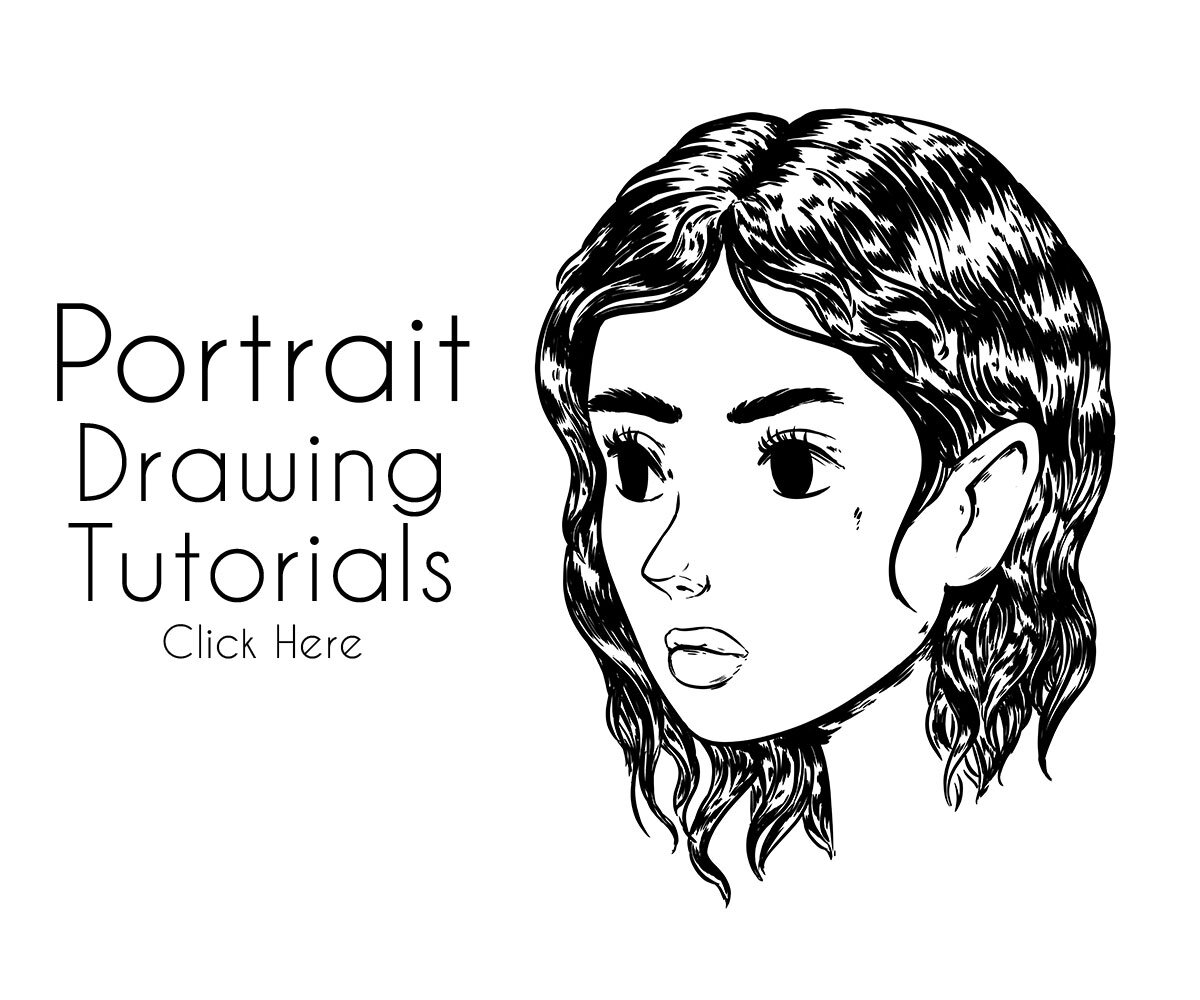How to Draw Hair: Video Course
Gumroad is a platform that will allow you to keep access to the course forever, just make an account and you can stream the videos and download the files without worrying about losing them in the future! :D
7 Stages of Drawing Hair
These are the stages that the hair drawing course is designed around. The central philosophy of the tutorials I make is to start simple and build upwards, so each step building upon the last one so we will isolate each skill practice until we are comfortable with it! This makes the learning process much more streamlined and fun than trying to do everything at once.
Stage 1. Basic Forms
The foundation of drawing in 3 dimensions is the ability to draw basic forms, on page one of the worksheets we go over some forms that are commonly found when drawing hair shapes. Practicing these forms will allow us to simplify down the hairstyles and recreate them at multiple angles.
I believe that most creatives want to be able to create without restrictions, for drawing that would mean being able to draw things from imagination. Starting with a basic structure will give you the tools to study a hairstyle and be able to recreate it without reference.
This method of drawing will take some time to get used to but it will pay off in a huge way when you can draw any hairstyle without too much stress. I wish someone had taught me the relationship between these foundation skills and the freedom and joy that it can bring, which is why I design my tutorials in this order.
Stage 2. Baldcap
On the second page of the course we go over the region of the head where hair grows out from, this is important to understand so that we can place hair on the head at any angle. Practicing this early on will make it come more naturally as we draw more portraits. This isn’t necessarily a step that you draw in when drawing hair, but understanding it will make the entire process much easier.
Stage 3. Simplify Hair
We then follow up by combining the previous two skills and apply it to a hairstyle. By simplifying down the hairstyle to its basic components we have the opportunity to create important guidelines for the rest of the drawing. Getting this step down is the most important part of drawing hair that looks good.
This step can be the most challenging, especially if you are new to drawing 3-dimensional forms because it isn’t an easy skill to learn. This is so important to drawing that even veteran artists practice it regularly to maintain their drawing ability. This is why the course includes 30 practice pages that will help you develop this skill in a streamlined manner.
Obviously, there is no magic bullet to learning something that is challenging, but there are best practices and the format of the course is the best method of learning that I have found.
Stage 4. Detailed Lines
Now that we have the basic structure down, we will use those guidelines to create details that feel natural. The hard part of drawing details in hair is capturing the weight that the hair has while keeping it light and flowy.
This stage in the process is made a lot easier by the last step because we can follow the movement of the large forms to inform the direction of the lines.
Stage 5. Rendering
This part of the process is probably the most exciting and fun because it brings the drawing to life. Rendering (also known as shading) hair can seem overwhelming when you try to approach it as individual strands of hair instead of using large shapes.
In the course, we fill in the shading for a series of forms that will help you see and understand how to simplify this step-down. We then follow that up with applying that rendering to the hairstyle we have been working with.
Stage 6. Combine
Now that we have isolated down each step and practiced the necessary skills, we combine that understanding and redraw the hairstyle from multiple angles. The last page of the worksheet portion of the course is designed around using a simplified reference and applying it to the head at different angles. We use this approach in the 30 practice sheets that are also included.
Stage 7. Practice
To solidify what we have learned we repeat the practice and slowly draw more complex hairstyles. Drawing is a craft and not an academic exercise, just throwing information your way would not help you become a better artist. These practice sheets give you the opportunity to practice your skills and improve, unfortunately there is no secret or magic that can be bestowed upon you to instantly improve [ I know, its sad ): ] so repeated practice is key.
Drawing can be quite challenging but it’s honestly a magical skill. I decided to become an artist because I knew I would feel proud to have learned such an interesting skill. I was not born with natural talents, which is why I feel confident that these tutorials and courses I create can help others, because I know what would help me. I can’t wait to share this knowledge with you ^.^
Let’s draw some hairstyles together! :D











